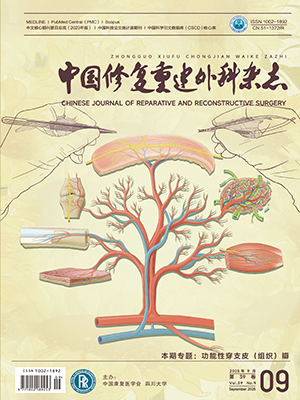In order to observe the effect of far infrared rays on the survival of skin flap, the following experiment was performed. Forty-eight SD rats were selected and divided into two groups. The rats received 0.3 w/cm2 radiation twice a day from 3 days before operation to 5 days after operation in the experimental group, while in the control group the rats received none before or after the operation. The flap was designed as 2 cm x 6 cm in the back of the rats with the pedicle caudalward. The microcirculatory changes of the flap were observed, and the survival area of the flap was calculated. The results showed that either in the proximal or in the distal part of the graft, in the experimental group, the mean opening rate, diameter and the flowing velocity of the microvessels were significantly higher than those in the control group (P lt; 0. 05). The mean rate of survival area of the experimental group (80.5%) was also higher than that of the control group (62.7%) (P lt; 0.01). It was suggested that radiation with far infrared rays could dilate the microvessels, improve the flap microcirculation, therefore, enhance the survival of the randomized skin flap.
Citation: Jiang Ping,Luo Lisheng.. THE EFFECT OF FAR INFRARED RAYS ON THE SURVIVAL OF RANDOMIZED SKIN FLAP IN THE RAT: AN EXPERIMENTAL STUDY. Chinese Journal of Reparative and Reconstructive Surgery, 1997, 11(2): 69-71. doi: Copy
Copyright © the editorial department of Chinese Journal of Reparative and Reconstructive Surgery of West China Medical Publisher. All rights reserved




